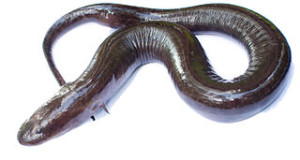Few amphibians exhibit a more dramatic change in appearance than male Crested Newts in breeding condition. It really is something to see and, fortunately, breeding this species is actually quite feasible. Breeding the crested newt in captivity also has great conservation value, as this species is in decline throughout Europe. Furthermore, any information garnered is applicable to other species of concern, including the Alpine Newt, Triturus alpestris and the Swiss Newt, T. helveticus.
Natural History
The Crested Newt, which may reach 6.4 inches in length, is grayish to black above and orange with round black spots below. 
Living a largely terrestrial existence for most of the year, both sexes enter breeding ponds in late winter or early spring. At this point, the males’ colors intensify and a large, comb-like dorsal crest develops. In both sexes the tail also becomes more paddle-like to facilitate swimming. Males also usually develop a white line along the sides of the tail, while reproductively active females sport a white line down the back.
Bringing Newts into Breeding Condition
While breeding may occur spontaneously in captivity, the most consistent results will be obtained if the newts are over-wintered at 36-42 F. An increase in water depth may stimulate breeding outside of the normal cycle, but fewer viable eggs will be produced).
Upon emergence from hibernation, the newts should be housed in aquarium, or their terrestrial terrarium should be modified to provide a large water area. Resting sites such as cork bark slabs or basking platforms should be provided.
Due to their unique egg-laying behavior (females fold a plant leaf around each egg), crested newts slated for breeding are best housed in well-lit aquariums stocked with live plants. The water should, if possible, be maintained at 54-65 F (a cool basement or garage often proves ideal).
We’ll take a look at raising the larvae next week.
 That Reptile Blog – Reptile, Amphibian and Exotic Pet Care and Information
That Reptile Blog – Reptile, Amphibian and Exotic Pet Care and Information



Hello Frank and a good writeup on a most fascinating species. This and the alpine newt were two species I dreamed of seeing in person/keeping(after seeing them depicted in many books).
Seems not many are working with the normal cristatus at the moment.(dobrogicus and karelinii are the most common) Do you have any idea how the originals got into the US? I understand they are protected in most places. The karelinii I know came in from Ukraine.
I received some eggs of karelinii from a fellow breeder and have since donated the eggs to a Science Museum of sorts on our campus. Keeping animals yourself is one thing, helping someone else with them is another(especially with limited resources).
We had two easily obtainable sources of water, RO, and industrial tap water(which you are not supposed to drink). Not wanting to have to deal with the hassle of re-adding minerals to RO(I recall a few products are out there for FW) I opted for industrial water. I am curious to see how this affects the newts. Feeding has also been a bit of a challenge.(blackworms are expensive, not all the newts will eat newt bites that were experimented with, and red wigglers here are expensive. I’ve suggested a worm bin but it is all musing at the moment).
Also, do you know what causes floating in newts that later dissapears? It seems to be brought on by warm temperatures, but left alone the animals soon recover themselves(sometimes w/o the temps going back down). It is not bloat. The animals will look and act almost normal(but may brace themselves against objects to stay submerged) but upon surfacing for air end up bobbing like corks for quite some time before managing to expel the excess. I’ve seen it in pretty much every species I keep and recently with theses karelini…but it seems without consequences.
Hope to hear back soon!
~Joseph
Hello Joseph, Frank Indiviglio here.
I hope all is well.
I’ve kept alpine newts that arrived via a confiscation – very sensitive to temperature as you’d expect but otherwise hardy. Crested newts are a real conservation concern in parts of Europe, especially Great Britain; in years past however they were the species most commonly picked up even by casual observers, kids on a day trip to the countryside, and so a great many found there way into captivity there and abroad. Friends who grew up in England tell me that they were quite common into the late ‘70’s in many places.
It is amazing how expensive worms of all types are, including, at least here in NY, marine worms used for bait (sandworms). As I kid I would write in to Fur-Fish-Game Magazine for earthworm-breeding “get rich quick” plans (most involved raising worms below chicken pens, a somewhat impractical idea in the Bronx!). Keeping a bin going is the best way, you can really get tons of tiny worms if you freed the colony heavily; some types are more heat tolerant than others.
Floating is almost always due to gas produced by bacteria and, as you noted, is usually associated with higher temp; generally the bacteria involved are always present, just build up in numbers as temperatures rise and newt immune systems falter. Chilling does work well often, and I’ve also seen newts overcome this on their own, without a drop in temperature. I’ve refrigerated axolotls to kill off bacteria also – this was a common practice in axolotl/leopard frog labs years ago, even works for red leg on occasion.
Good luck, enjoy and please keep me posted.
Best regards, Frank Indiviglio.